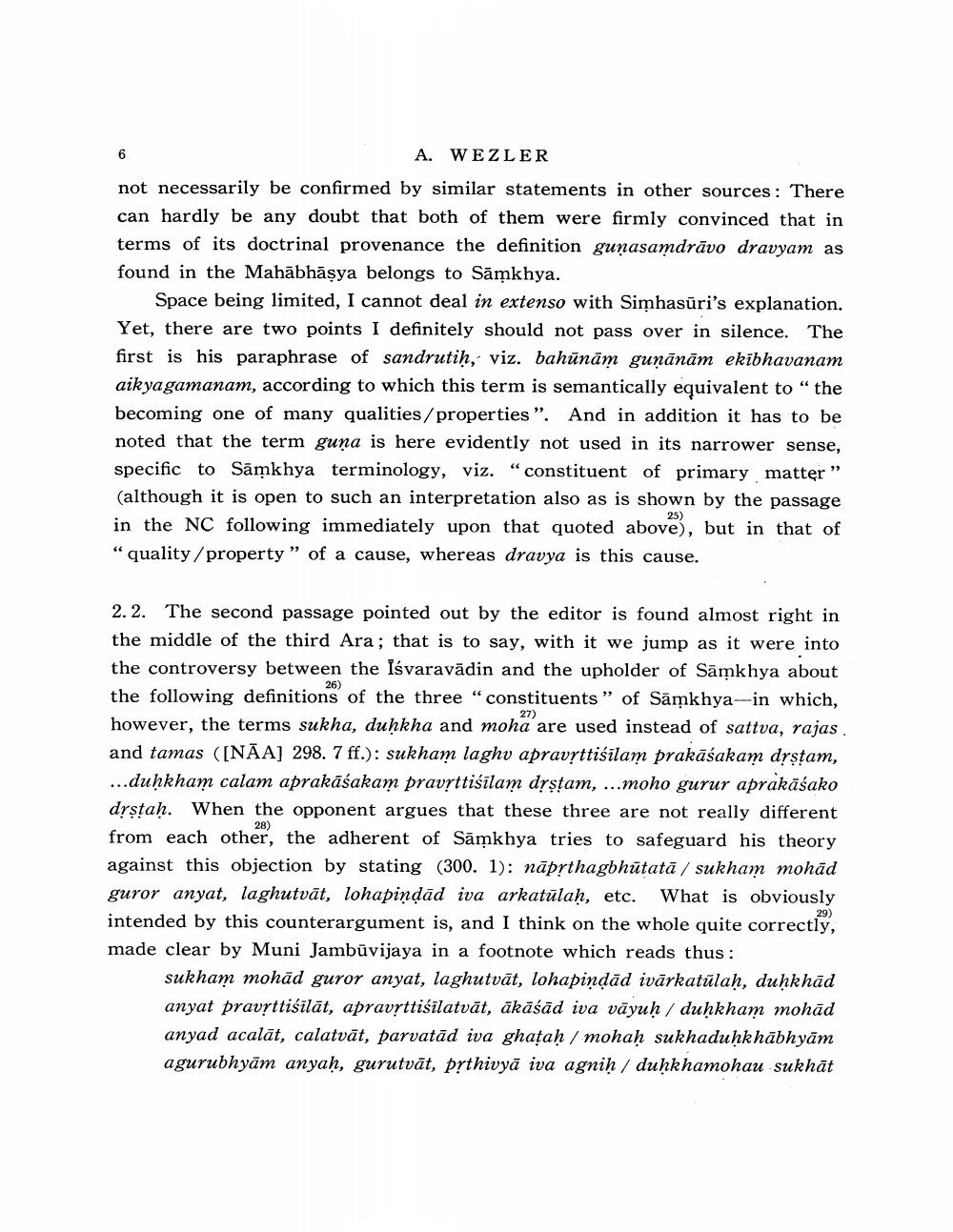Book Title: Note On Mahabhasya II 366 26 Gunasamdravo Dravyam Author(s): A Wezler Publisher: A Wezler View full book textPage 6
________________ 6 A. WEZLER not necessarily be confirmed by similar statements in other sources: There can hardly be any doubt that both of them were firmly convinced that in terms of its doctrinal provenance the definition gunasamdravo dravyam as found in the Mahabhäṣya belongs to Sämkhya. Space being limited, I cannot deal in extenso with Simhasûri's explanation. Yet, there are two points I definitely should not pass over in silence. The first is his paraphrase of sandrutiḥ, viz. bahūnām guṇānām ekibhavanam aikyagamanam, according to which this term is semantically equivalent to "the becoming one of many qualities/properties". And in addition it has to be noted that the term guna is here evidently not used in its narrower sense, specific to Samkhya terminology, viz. "constituent of primary matter" (although it is open to such an interpretation also as is shown by the passage in the NC following immediately upon that quoted above), but in that of "quality/property" of a cause, whereas dravya is this cause. 25) 26) 27) 2.2. The second passage pointed out by the editor is found almost right in the middle of the third Ara; that is to say, with it we jump as it were into the controversy between the Isvaravadin and the upholder of Samkhya about the following definitions of the three "constituents" of Samkhya-in which, however, the terms sukha, dukkha and moha are used instead of sattva, rajas and tamas ([NAA] 298. 7 ff.): sukham laghv apravṛttisilam prakāśakam drstam, ...duḥkham calam aprakāśakam pravṛttisilam dṛṣṭam, ...moho gurur aprakāśako dṛṣṭaḥ. When the opponent argues that these three are not really different from each other, the adherent of Samkhya tries to safeguard his theory against this objection by stating (300. 1): näpythagbhütată/ sukham mohad guror anyat, laghutvāt, lohapindad iva arkatalaḥ, etc. What is obviously intended by this counterargument is, and I think on the whole quite correctly, made clear by Muni Jambūvijaya in a footnote which reads thus: 28) sukham mohad guror anyat, laghutvät, lokapindad ivärkatülah, duḥkhad anyat pravṛttisilät, apravṛttisilatvät, ākāśad iva vayuḥ/ duḥkham mohad anyad acalat, calatvät, parvatäd iva ghaṭaḥ/mohah sukhaduḥkhabhyam agurubhyam anyaḥ, gurutvät, prthivya iva agniḥ/ duhḥkhamohau sukhat 29)Page Navigation
1 ... 4 5 6 7 8 9 10 11 12 13 14 15 16 17 18 19 20 21 22 23 24 25 26 27 28 29 30 31 32 33
